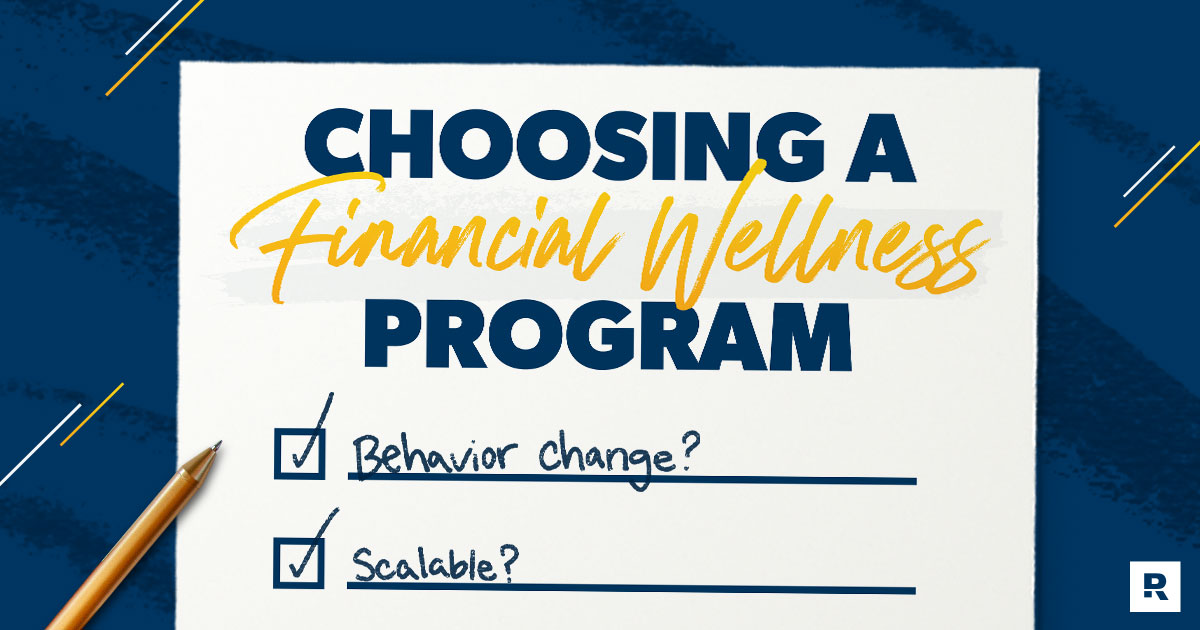Seminars that teach employees how to handle money are a dime a dozen. The problem is, if you rely on them to meet the needs of your employees, you will get dime-a-dozen results. Studies show that employees who spend more time thinking about their financial troubles tend to be less productive at work and have lower morale, which in turn hurts your company.
The purpose of a wellness program is to help, not hurt. Choosing a high-quality program is the first step in meeting the needs of your employees and your company. Here are five features that the best plan must offer:
1. It Creates Sustainable Behavior Change.
A successful financial wellness program must be easy to follow and serve your employees over time in order to create lasting behavior change. Not only will a quality program have a proven track record for sustained success, but it will also provide leadership with statistics to show the real difference it's making in employees' lives.
2. It is Scalable.
A good program will meet your employees where they are. Your company may have multiple locations, different shifts or even spouses who would like to participate, making class facilitation a huge challenge. Employees need a program that is available online any hour of the day or night. Since practically all employees have some level of access to the Internet regardless of income level, they can get the information they want at their own pace. A mobile program is the best fit for people's busy and unique schedules. Online programs also provide a much-needed layer of privacy. It's tough enough for someone to talk about a money situation—and almost impossible to get them to do it in a workplace or classroom setting.
3. It Teaches Over Time, Not With a One-Time Seminar.
A 45-minute lunch-and-learn session once a year is not enough financial education for your employees. And, let's be honest, those sessions fly right over their heads. Besides, that level of communication won't lead to any sustained behavior change for them. The program should offer material that helps them learn over time so they can form good money habits. Someone who is in the midst of paying off debt won't be interested in investing, but if they can go back and reference the material when they are out of debt and ready to build their nest egg, they are better served.
4. It is Personalized for the Employee.
People have different needs depending on where they are in life (just starting out, getting married, having a child, or nearing retirement). A good wellness package addresses that person's specific needs and helps them where they are, rather than just offering blanket answers.
5. It Should be Offered to Everyone.
If you only offer a financial wellness program to employees who want it, the guilt and shame may drive away those who need it the most. When you offer it to all employees, as you would other benefits, participation rates and ROI substantially increase. It may even cost less to provide the program to all employees because of different pricing structures for companywide initiatives.
The power to select the program that will bring success to your employees is in your hands. The result will be felt by your entire company for years to come.


